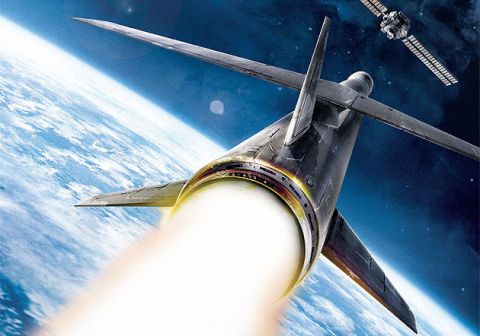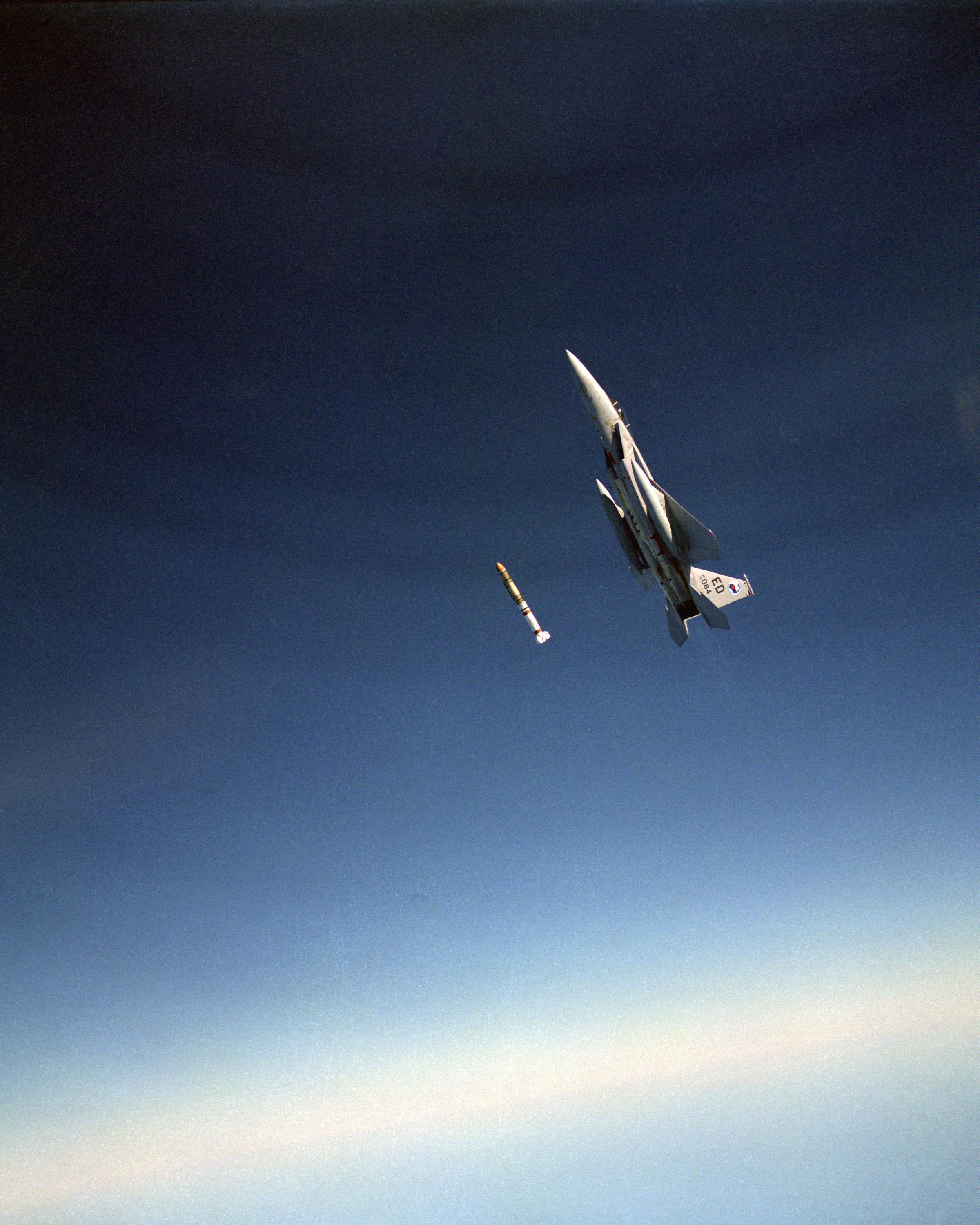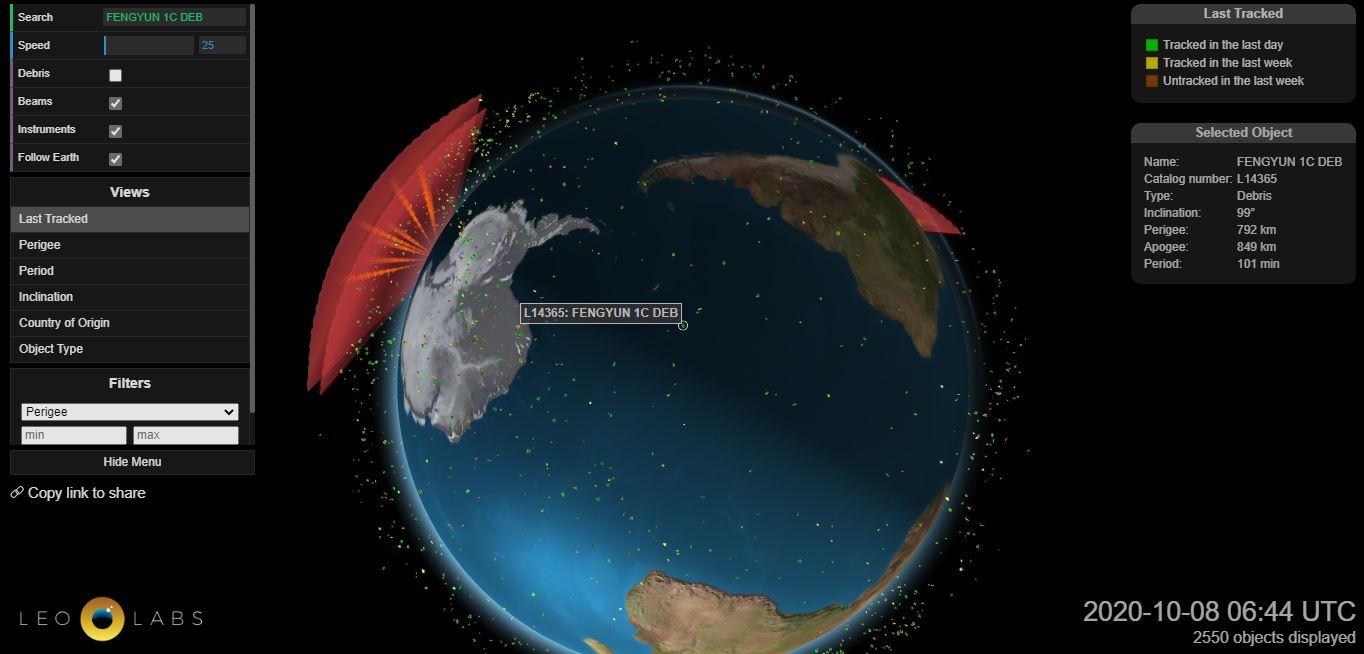A History of Space Situational Awareness (Part 2)
Initiate Anti-satellite Tests.
Lewis Foggie • 2 November, 2020
This article is part 2 of a 2-part series. Click here for Part 1.
Recap
In Part 1 we saw that the birth of Space Situational Awareness (SSA) was closely related with the launch of Sputnik, the first satellite to orbit the Earth, in the midst of the Cold War. This lead America to develop programs and technologies focussed on surveillance of space activities and delivering space-based missile warning systems into orbit. The United Nations (UN) wrote treaties like the Outer Space Treaty to prevent the over-militarisation of space and celestial bodies. With the crash-landing of one Soviet satellite in Canada spreading uranium around the countryside and the US Skylab dropping on the coast of Australia, it became clear that watching the skies closely would be a necessary precaution against future disasters. Continuing on from 1973, we will see that taking responsibility for the space environment has often come secondary to the more urgent need to test and deliver new space technology for both military and commercial purposes.
A History of Space Situational Awareness: Part 2
The last quarter of the 20th century was plagued by a multitude of catastrophes in space, both by accident and by pre-meditated action during the development of Anti-Satellite (ASAT) missiles.
An Introduction to Anti-Satellite Missile Tests

We will discuss 3 types of ASAT missiles by their chronology:
- Nuclear-tipped ASAT missiles
- Co-orbital ASAT missiles
- Kinetic kill ASAT missiles
Nuclear Tipped ASAT Missiles
The US started to research and develop anti-satellite missiles soon after the launching of Sputnik. From the 1950s to 1960s a rather primitive nuclear-based ASAT strategy was followed. To destroy an orbiting satellite, a nuclear-tipped missile could be launched from the ground and intercept the target satellite close enough to blow up the nuke in its proximity. A proximity explosion was preferred over a direct hit, since missile homing technology was limited in those years. The strategy was crude, but any strategy would do in the face of a potential threat of Soviet “orbital bombardment systems”. However, nobody tested these kinds of nuclear missiles live – blowing up a nuke in space would also damage any satellites in proximity and cause radiation damage for weeks to come, hence why it was included in the Partial Nuclear Test Ban Treaty forbidding nuclear tests in space.
Co-orbital ASAT Missiles
Moving through the 1960s into the 1970s a new strategy was in vogue - co-orbital ASAT weapons. The nuclear-tipped interceptor was replaced by conventional weapons with a smaller explosive radius. These weapons could be sent into an orbit close to the target satellite orbit and, from there, slowly inch its way closer to the satellite before detonating in close proximity. This was more accurate than the nuclear strategy and would cause less collateral damage; the downside was that the time from launch to detonation would be a few hours instead of a few minutes because it takes time to orbit into proximity instead of immediately intercepting from the ground. A few hours rendez-vous time is not ideal if a space-based weapon is currently assaulting your nation.
Kinetic Kill ASAT Missiles

Having given a broad context for tests up until the end of the 1970s, we can continue where A History of Space Situational Awareness: Part 1 left off, when the US started to test kinetic kill ASAT missiles.
1985 – The US launches a test of a new two-stage ASAT missile launched from an F-15 fighter jet flying at high altitude. The missile is designed to intercept a satellite dead-on - "kinetic kill" - rather than merely detonating in proximity. This strategy is enabled by the recent advancement of target homing technology. The test subject is an old satellite at an altitude of 555km. A few minutes after launch, the missile destroys the satellite, leaving over 1000 pieces of debris in its wake. This debris would orbit the earth until the last piece of tracked debris fell out of orbit in 2002.
1986 – US Congress bans further live ASAT testing due to the concerns of debris damaging other satellites.
2007 – China launches an ASAT test and blows up Fengyun-1C into an estimated 150,000 pieces. Even today in 2020, bits of Fengyun-1C regularly show up on collision-predicting software as potential threats to existing satellites. A quick search on the debris-tracker for “Fengyun 1C Deb” reveals 3460 matches, most of which are still in orbit. Companies like Leolab provide software for collision alerts so satellites can carry out manouvres to avoid predicted collisions with debris such as this. I highly recommend you head over to their visualisation tool and search "FENGYUN 1C DEB" to see all the bits of Fengyun still in orbit. (Do not tick the "debris" checkbox.)

2008 – The US destroys another satellite, interrupting its reentry course. The government states that if they had allowed the spacecraft to reenter the atmosphere it would have resulted in a release of toxic hydrazine gas over the size of two football fields on the ground. China and Russia suggested this was just a cover up for the US to run another ASAT test. It is clear that ASAT tests are frowned upon and often politically charged. Whether or not it was an ASAT test or a genuine emergency, we still remember the Soviet satellite crash in Canada in 1977. At least it looks like SSA is keeping people safe.
It's Not Always on Purpose
2009 – Russian satellites Irridium 33 and Kosmos-2251 collide at 11,700m/s, spreading thousands of pieces of debris in two orbits. They were predicted to miss each other by a few km, but in this case the lack of prediction accuracy lead to a catastrophe. Vectors used to describe satellite positions and velocities are rough estimates and not updated regularly enough to provide accurate collision predictions. Watch the Youtube video below to see the result.
2009 – North Korea signs the Outer Space Treaty.
2012 – The International Space Station fires its thrusters to avoid 7-year-old Fengyun-1C debris. It is not an uncommon occurrence for the ISS to perceive a threat like this. There are lifeboats on the ISS should an accident occur, and astronauts often take cover in a better-protected area of the space station when threats are detected.
2019 – India succesfully tests an ASAT missile, blowing up one of their own satellites and spreading debris into a highly used orbit. International outrage ensues. Some call it irresponsible – NASA is particularly unhappy with the risk to the International Space Station. India says they simulated how much debris would be created and had deemed the effects of it to be minimal. Some experts disagree with the possibility of predicting something like that, stating that it was merely a power play. It has the desired effect anyway – nobody can doubt that India now belongs in the ranks of the great space powers along with Russia, US, Europe, Japan and China.
2020 – People recently made a big deal out of the Russians carrying out a non-destructive ASAT test. The missile itself was launched from a satellite already in orbit, which appears to be a relatively new kind of ASAT strategy. What's not new is that people always outraged by an anti-satellite test, even if it's non-destructive. Various US authorities have called it "highly provocative" and that it goes against Moscow's rhetoric of non-weaponisation of space. The US authorities say these things, but the author thinks it is plausible that they already have satellite-based ASAT weapons covertly orbiting the earth.
The future of SSA?
There are now around 3,000 satellites currently orbiting the Earth and 10,000+ due to be launched in the next decade.
Space is more active than ever, and the dangers are clear. From spreading radioactive waste around the countryside to threatening astronauts on the International Space Station, it is hoped that better technology for tracking and signalling predicted collisions and re-entries will mean less problems in future, and that countries adhering to treaties will maintain peace in space. Technology and space policy will improve, but the number of objects and threats in space will continue to increase.
Next week we'll see how Donald Kessler of NASA figured out the probability of two satellites colliding.